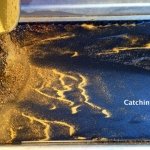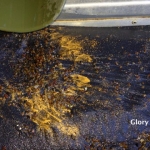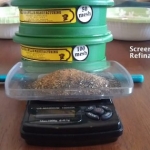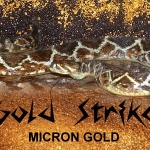I’ve spent significant time and financial resources on enhanced gravity centrifugal concentration systems, for the recovery of very fine (<140M) free gold and other values. This equipment was formal, industrial grade process equipment typically found in modern mine and mill projects.
In my experience, the single greatest challenge to making consistent, successful recoveries with these systems was the proper preparation and classification of the feed material. I had important projects [often high grade but with limited reserves] that were either marginally successful, or never went into production, because of the high costs required to meet the classification needs of these centrifugal concentration systems when treating my particular ores. I’ve also invested time and money into dry electrostatic separation technologies which failed to produce reliable production results.
The second part of this brief testimony describes the success you have had using my Gold Strike Micron Gold Processors.
I’ve experienced several important successes with the GSMG processing technology.
The first has been the ability to consistently recover precious metal values below 100M (149 microns), to as fine as from 1250 to 2500M (10 to 5 microns). (The low end of this particle size range parallels the commercial recovery of tantalum particles involving very expensive and complex high g-force centrifugal systems with all the required ancillary equipment.) In my experience, this level of verified performance by the GSMG technology is extremely uncommon in the mineral process industry, regardless of capital cost.
The second is that I’ve never encountered nor known of a system that could deliver this level of performance in a single process step. Usually, the number of steps and pieces of equipment required to accomplish the same outcome requires large capital and engineering efforts, and often for results that are not as successful, especially for the recovery of ultra-fine particles.
The third area of success-which I believe to be unprecedented-is the system’s ability to function without the use of complex screening plants normally required to beneficiate a feed into multiple narrow classifications. In general, the narrower the size range into which a feed is classified, the greater the recovery efficiencies will be in a gravity recovery process. When you are able to narrow the “less than / greater than” sizing parameters, you improve gravity based recovery efficiencies for that fraction.
Although the GSMG system requires the feed be screened to -20M, the economic impact of being able to essentially eliminate the capital and time expenditures required to test, develop, capitalize, build and commission screening plants necessary to generate multiple sized fractions, i.e., -40M to +60M, -60M to +80M, -80M to +100M, etc., cannot be overstated.
For even small to moderate commercial production, such screening plants can cost many hundreds of thousands of dollars. From a commercial success standpoint, the value proposition of this technology and it’s ROI is extraordinary, in my opinion.
The minimal requirements of the GSMG system of 1) screening the feed to -20M, and 2) providing a re-circulating water supply of nominal volume and pressure is a tremendous advantage. It creates the opportunity for successful commercial level recovery operations at greatly reduced capital and operational costs.
An extremely important final issue for me has been the ability to test potential candidate ores/materials by employing the actual production technology itself. Other than the inevitable learning curves that are normal when fine tuning any system for a given material, with time and experience you can expect consistent results that are both production based and highly scalable.
In other words, processing representative test samples measured in the hundreds of pounds-or even tons-will invariably produce far more reliable results, for far less time and cost, than scaling up from lab tests involving assay tons of material all the way to pilot scale test work.










